Abstract
Concentration profiles of 2.5 microns latex beads were measured to demonstrate lateral transport of platelet-sized objects in flows of blood suspensions; the flows had equivalent Poiseuille wall shear rates (WSRs) from 250 to 1220 s-1. Each experimental trial began with a steady flow of suspension without beads in a thin-walled capillary tube (219 microns ID; 10.2 microns SD). The tube entrance was then switched to a reservoir containing suspension of equal hematocrit, but with beads, for a short interval of flow at the same WSR. This process established a paraboloidal tongue of labeled suspension with a transient concentration gradient at its surface. The tube and contents were rapidly frozen to fix the suspended particles in flow-determined locations. Segments of frozen tube were collected at distances from the entrance corresponding to 13%, 39%, and 65% of the axial extent of the ideal paraboloidal tongue. Concentration profiles were estimated from distances measured on fluorescence microscope images of cross-cut tube segments. Experiments used tubes either 40 or 50 cm long, suspension hematocrits of 0, 15, or 40%, and bead concentrations in the range of 1.5-2.2 x 10(5)/mm3. Profiles for 0% hematocrit suspension, a dilute, single-component suspension, had features expected in normal diffusive mixing in a flow. Distinctly different profiles and more lateral transport occurred when the suspensions contained red cells; then, all profiles for 13% extent had regions of excess bead concentration near the wall. Suspension flows with 40% hematocrit exhibited the largest amount of lateral transport. A case is made that, to a first approximation, the rate of lateral transport grew linearly with WSR; however, statistical analysis showed that for 40% hematocrit, less lateral transport occurred when the WSR was 250 s-1 or 1220 s-1 than 560 s-1, thus indicating that the rate behavior is more complex.
Full text
PDF

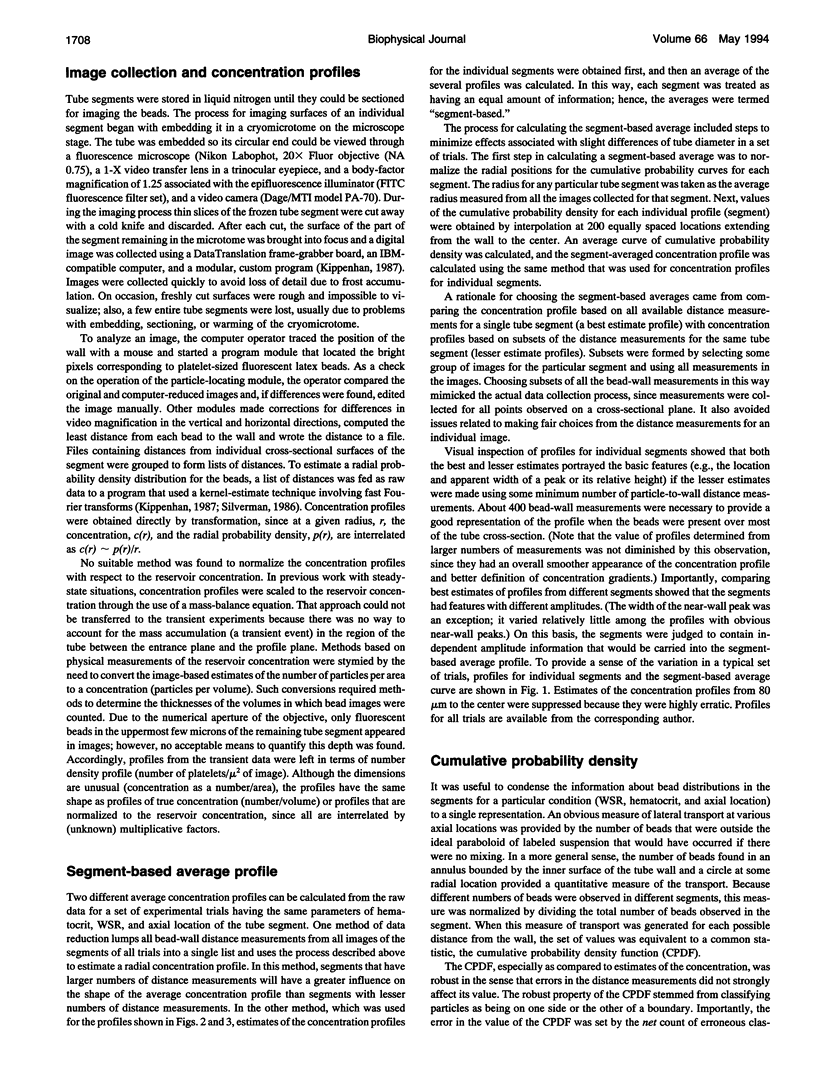
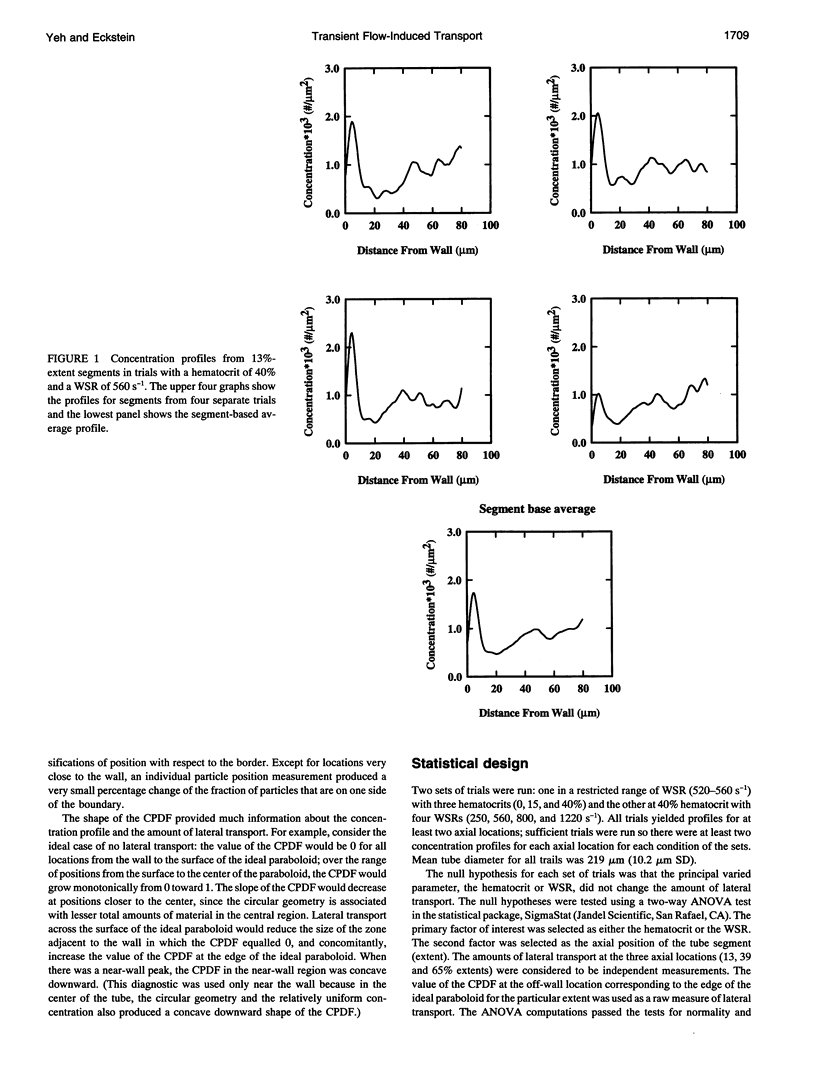
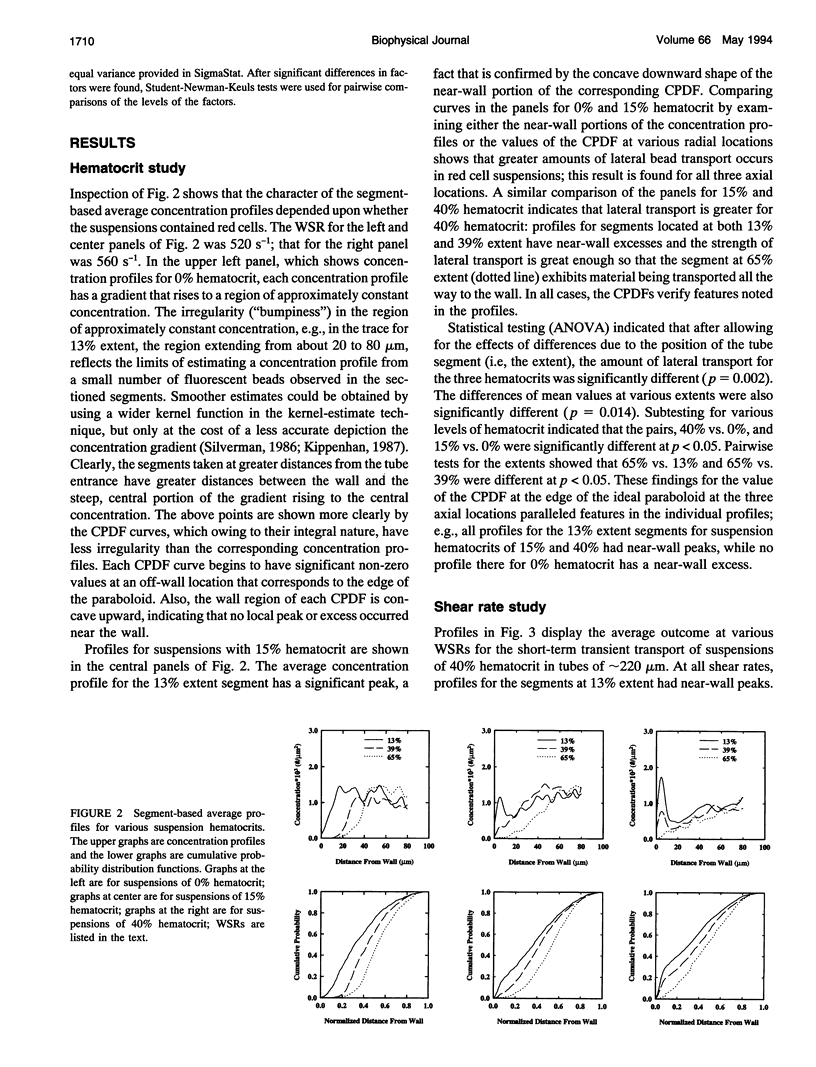
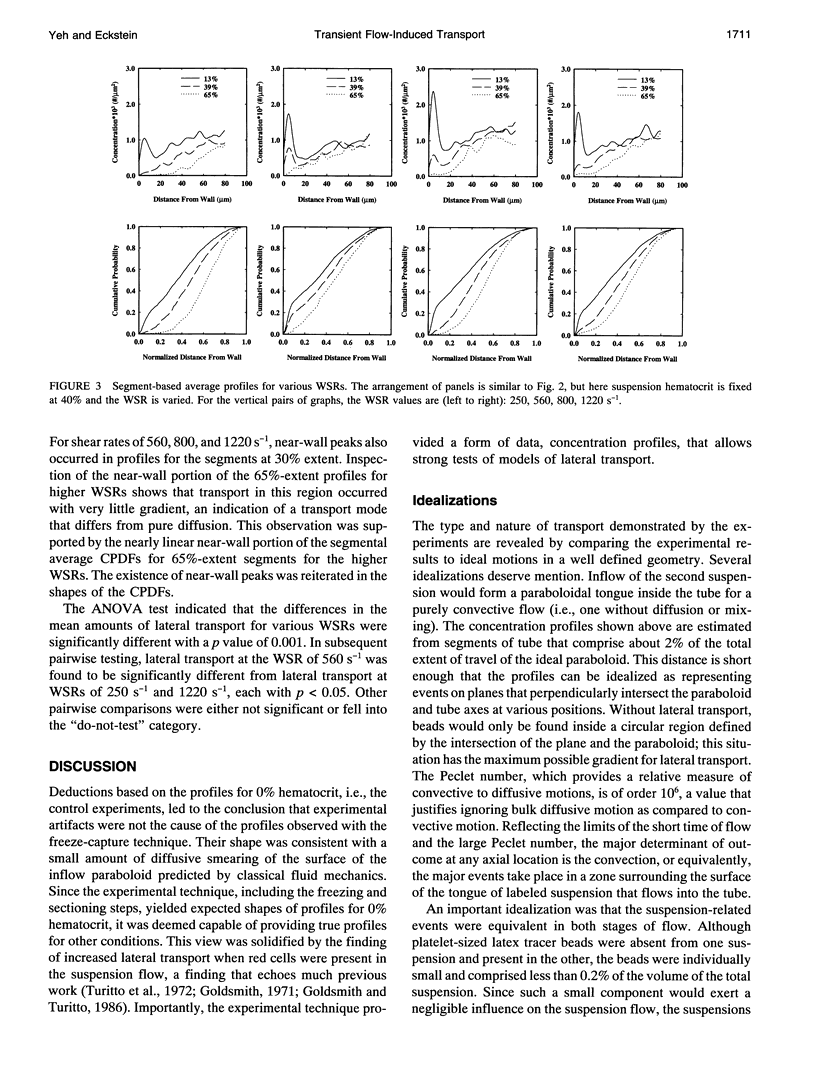


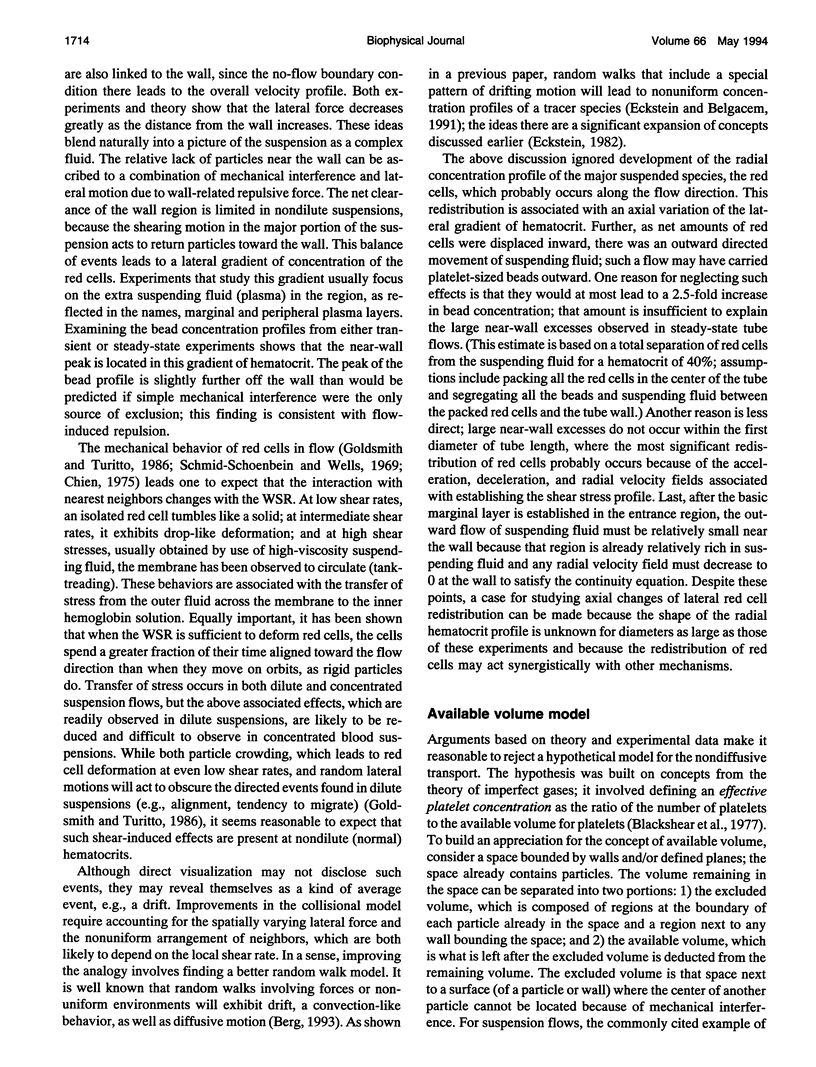
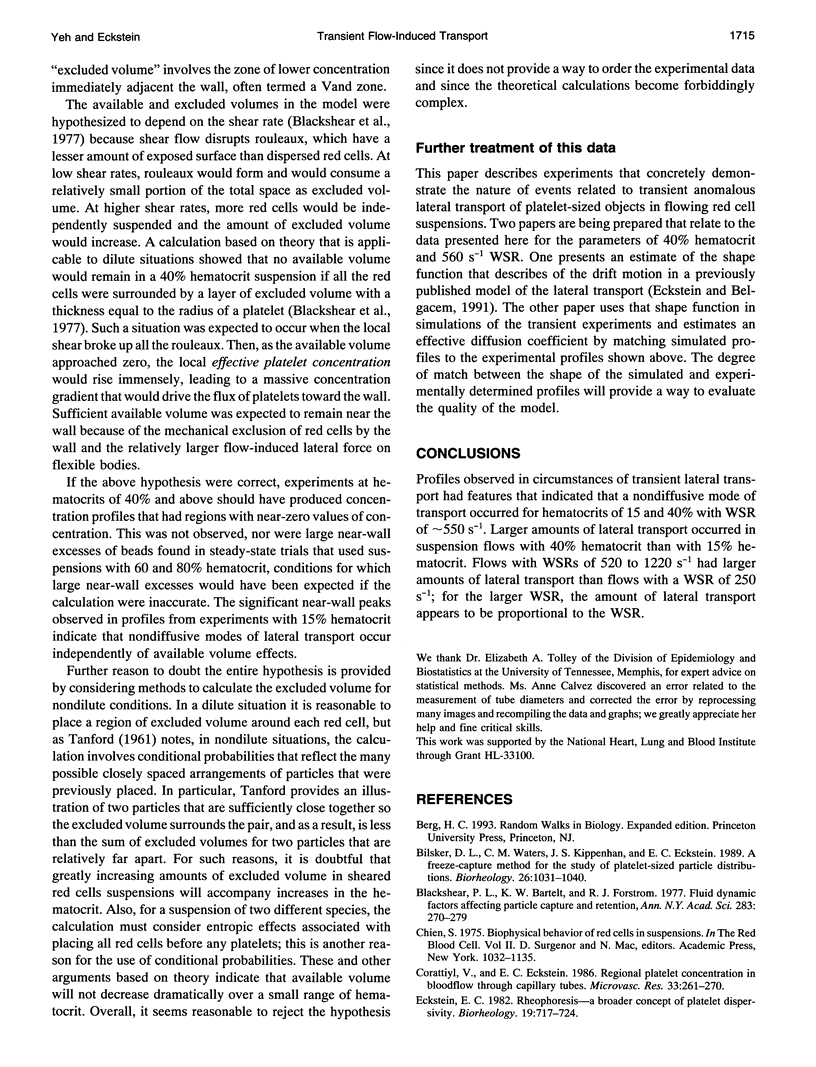

Selected References
These references are in PubMed. This may not be the complete list of references from this article.
- Bilsker D. L., Waters C. M., Kippenhan J. S., Eckstein E. C. A freeze-capture method for the study of platelet-sized particle distributions. Biorheology. 1989;26(6):1031–1040. doi: 10.3233/bir-1989-26606. [DOI] [PubMed] [Google Scholar]
- Corattiyl V., Eckstein E. C. Regional platelet concentration in blood flow through capillary tubes. Microvasc Res. 1986 Sep;32(2):261–270. doi: 10.1016/0026-2862(86)90061-0. [DOI] [PubMed] [Google Scholar]
- Eckstein E. C., Belgacem F. Model of platelet transport in flowing blood with drift and diffusion terms. Biophys J. 1991 Jul;60(1):53–69. doi: 10.1016/S0006-3495(91)82030-6. [DOI] [PMC free article] [PubMed] [Google Scholar]
- Eckstein E. C., Koleski J. F., Waters C. M. Concentration profiles of 1 and 2.5 microns beads during blood flow. Hematocrit effects. ASAIO Trans. 1989 Jul-Sep;35(3):188–190. [PubMed] [Google Scholar]
- Eckstein E. C. Rheophoresis--a broader concept of platelet dispersivity. Biorheology. 1982;19(6):717–724. doi: 10.3233/bir-1982-19605. [DOI] [PubMed] [Google Scholar]
- Eckstein E. C., Tilles A. W., Millero F. J., 3rd Conditions for the occurrence of large near-wall excesses of small particles during blood flow. Microvasc Res. 1988 Jul;36(1):31–39. doi: 10.1016/0026-2862(88)90036-2. [DOI] [PubMed] [Google Scholar]
- Goldsmith H. L. Red cell motions and wall interactions in tube flow. Fed Proc. 1971 Sep-Oct;30(5):1578–1590. [PubMed] [Google Scholar]
- Goldsmith H. L., Turitto V. T. Rheological aspects of thrombosis and haemostasis: basic principles and applications. ICTH-Report--Subcommittee on Rheology of the International Committee on Thrombosis and Haemostasis. Thromb Haemost. 1986 Jun 30;55(3):415–435. [PubMed] [Google Scholar]
- Schmid-Schöenbein H., Wells R. Fluid drop-like transition of erythrocytes under shear. Science. 1969 Jul 18;165(3890):288–291. doi: 10.1126/science.165.3890.288. [DOI] [PubMed] [Google Scholar]
- Tilles A. W., Eckstein E. C. The near-wall excess of platelet-sized particles in blood flow: its dependence on hematocrit and wall shear rate. Microvasc Res. 1987 Mar;33(2):211–223. doi: 10.1016/0026-2862(87)90018-5. [DOI] [PubMed] [Google Scholar]
- Waters C. M., Eckstein E. C. Concentration profiles of platelet-sized latex beads for conditions relevant to hollow-fiber hemodialyzers. Artif Organs. 1990 Feb;14(1):7–13. doi: 10.1111/j.1525-1594.1990.tb01586.x. [DOI] [PubMed] [Google Scholar]


